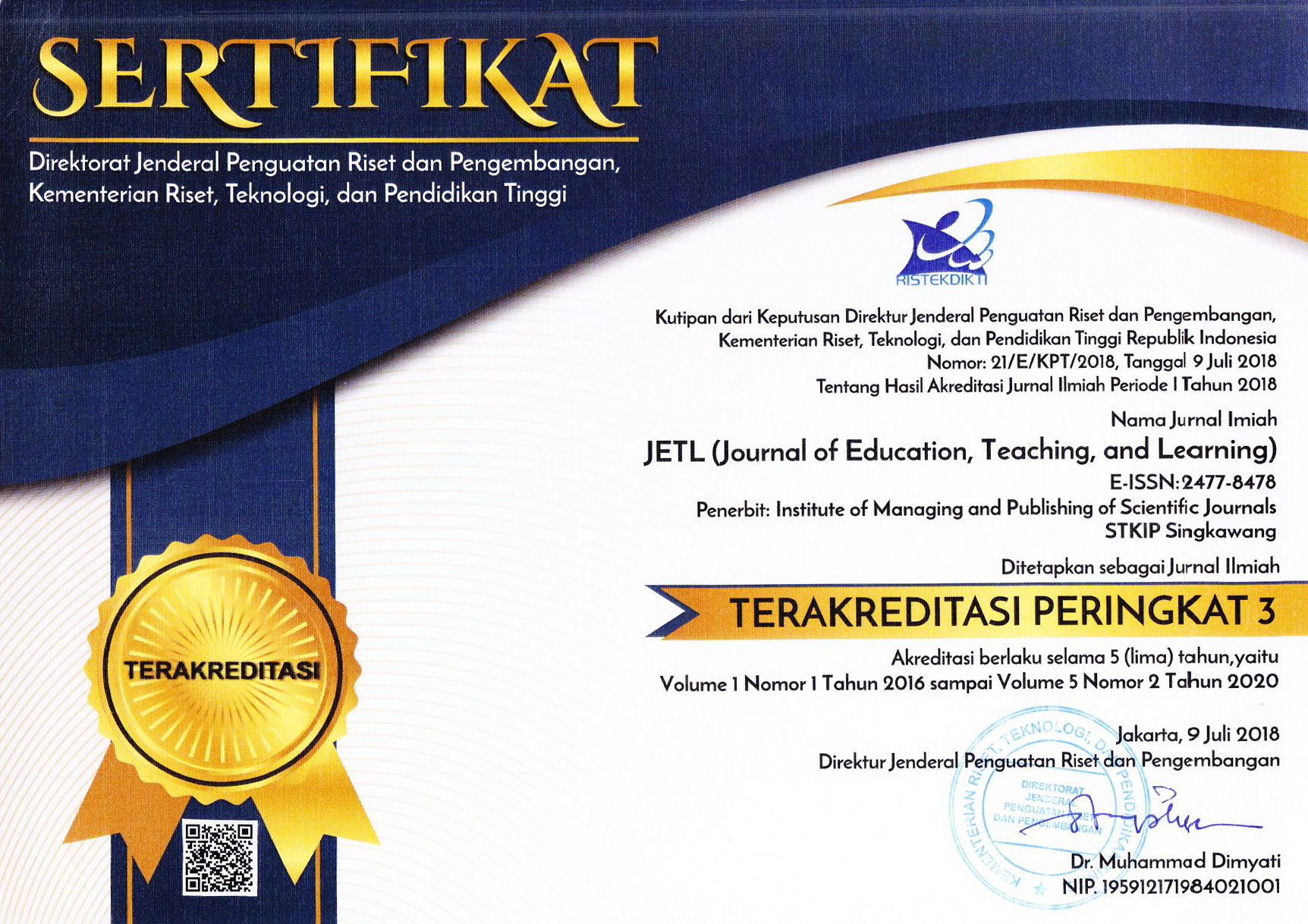Dayak and Their Daily Life
Abstract
Keywords
Full Text:
PDFReferences
J.U. Lontaan. Sejarah, Hukum Adat, dan Adat Istiadat Kalimantan-Barat Ed. 1. Pontianak: Pemda Tingkat I Kalbar Pilindo, 1974.
“Fridolin Ukur Biography." Internet: www.gunungmulia.com. [Nov. 25, 2016].
A.B. Hudson. "A Note on Selako: Malayic Dayak and Land Dayak Languages in Western Borneo." Sarawak Museum Journal, vol. 18, pp. 36-37, 1970.
R. Putra. Makna di Balik Teks Dayak Sebagai Etnis Headhunter. Journal Communication Spectrum, vol. 1, 2012.
M. Coomans. Manusia Dayak Dahulu, Sekarang, Masa Depan. Jakarta: Gramedia Pustaka Utama, 1987.
T. Riwut. Sanaman Mantikei Manaser Panatau Tatu Hiang: Menyelami Kekayaan Leluhur. Palangkaraya: Pusaka Lima, 2003.
Y. Davesa. "Simbol dan Makna Gerak Tari Pedang dalam Upacara Ngayau Dayak Mualang Kabupaten Sekadau." Jurnal Pendidikan dan Pembelajaran, vol. 6, 2017.
M. Hawkins. "Violence and The Construction of Identity: Conflict between the Dayak and Madurese in Kalimantan, Indonesia,” in The Politics of the Periphery in Indonesia: Social and Geographical Perspectives, Singapore: NUS Press, 2009, pp. 153-172.
DOI: http://dx.doi.org/10.26737/jetl.v2i1.145
Refbacks
- There are currently no refbacks.

This work is licensed under a Creative Commons Attribution-NonCommercial 4.0 International License.
Published by:
Institute of Managing and Publishing of Scientific Journals STKIP Singkawang
Sekolah Tinggi Keguruan dan Ilmu Pendidikan (STKIP) Singkawang
Address : STKIP Singkawang, Jalan STKIP - Kelurahan Naram Singkawang, Kalimantan Barat, INDONESIA, 79251
No. Telp. : +62562 420 0344
No. Fax. : +62562 420 0584
JETL (Journal of Education, Teaching, and Learning)
e-ISSN : 2477-8478
p-ISSN : 2477-5924

Editor in Chief Contact: [email protected] / Wa: +6282142072788
Publisher Contact: [email protected] / Wa: +6282142072788
Management Tools
JETL Indexed by:
JETL (Journal of Education, Teaching, and Learning) is licensed under a Creative Commons Attribution-NonCommercial 4.0 International License.











